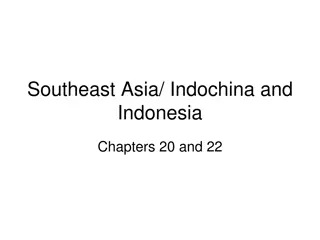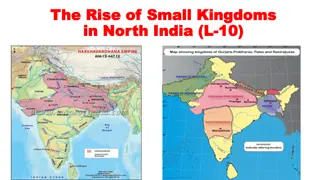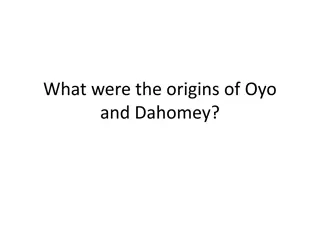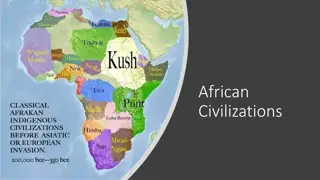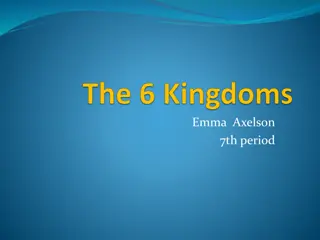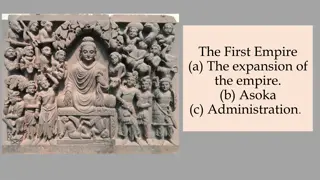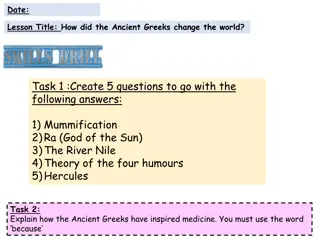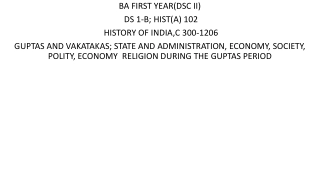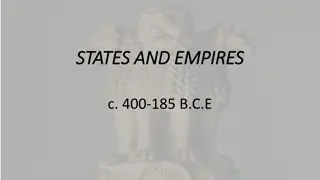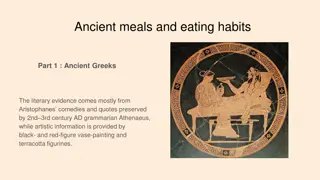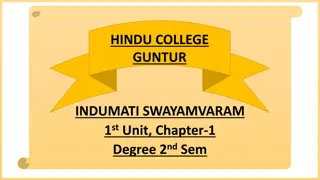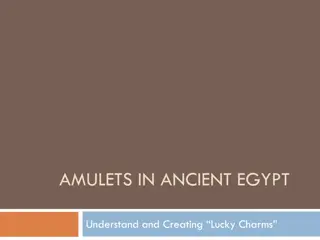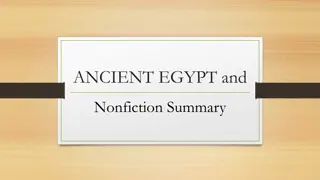Ancient Kingdoms of Gonds and Ahoms: Legacy and Administration
The Gonds and Ahoms were ancient tribes with rich histories in India. The Gonds, known for their decentralized administrative system led by various clans, had important rulers like Aman Das and Durgawati. Resources like wild elephants brought wealth but fell to the Mughals. The Ahoms, originating from Myanmar, built a powerful state with centralized governance, using forced labor and firearms to expand. Their society was clan-based with an organized administration and significant agricultural advancements.
Download Presentation

Please find below an Image/Link to download the presentation.
The content on the website is provided AS IS for your information and personal use only. It may not be sold, licensed, or shared on other websites without obtaining consent from the author. Download presentation by click this link. If you encounter any issues during the download, it is possible that the publisher has removed the file from their server.
E N D
Presentation Transcript
GONDS The Gondwana or the country inhabited by Gonds . They practised shifting cultivation . The Gond tribe was further divided into much smaller clans.Each clan had its own raja or rai. The Gond kingdom of Garha Katanga that had 70,000 villages . Gonds of vast forested region are called
ADMINISTRATION OF THE GONDS The administrative systems of these kingdoms became centralized . The kingdom was divided into garhs . Each garh controlled by a particular Gond clan-further divided into units of 84 villages called chaurasi. The chaurasi was subdivided into barhots made up of 12 villages each. Brahmanas received land grants from the Gond rajas- became more influential.
IMPORTANT RULERS Aman Das, the Gond raja of Garha Katanga, assumed the titleof Sangram Shah. , Dalpat, the son of Aman Das Durgawati, thedaughterof Salbahan. The Chandel Rajput raja of Mahoba-Dalpat died early.Rani Durgawati was capable-started ruling on behalf of her 5-year-old son, Bir Narain.Under her, the kingdom became even moreextensive . married princess
Resources Garha Katanga a rich state,earned much wealth by trapping and exporting wild elephants to other kingdoms. When the Mughals defeated the Gonds, they captured a huge bootyof precious coins and elephants.
The Ahoms The Ahoms migrated to the Brahmaputra valley from present-day Myanmar in the 13th century . They created a new state by suppressing the older political system of the bhuiyans (landlords).During the 16th century they annexed the kingdoms of the Chhutiyas (1523) and of subjugated manyother tribes . The Ahoms built a large state, and for this, they used firearms as early as the 1530s. Ahom state depended upon forced labour. Those forced towork for the statewere called paiks Koch-Hajo (1581) and
Administration By the first half of the 17th century, administration became quitecentralized . All adult males served in the army during the war. They were also engaged in building dams, irrigation systems and other public works. They also introduced new methods of rice cultivation. Ahom society was divided into clans or khels. There were very few castes of artisans, so artisans in the Ahom areas came from the adjoining kingdoms. A khel controlled several villages.The peasant was given land by his village community.Even the king could not take itaway without thecommunity s consent.



